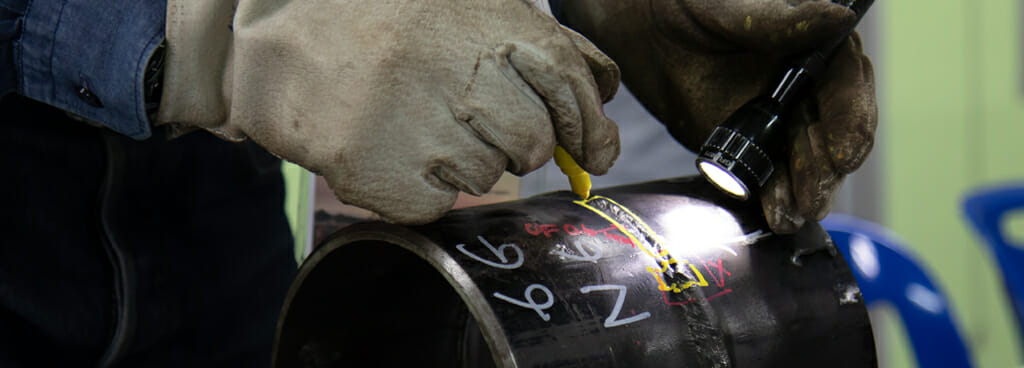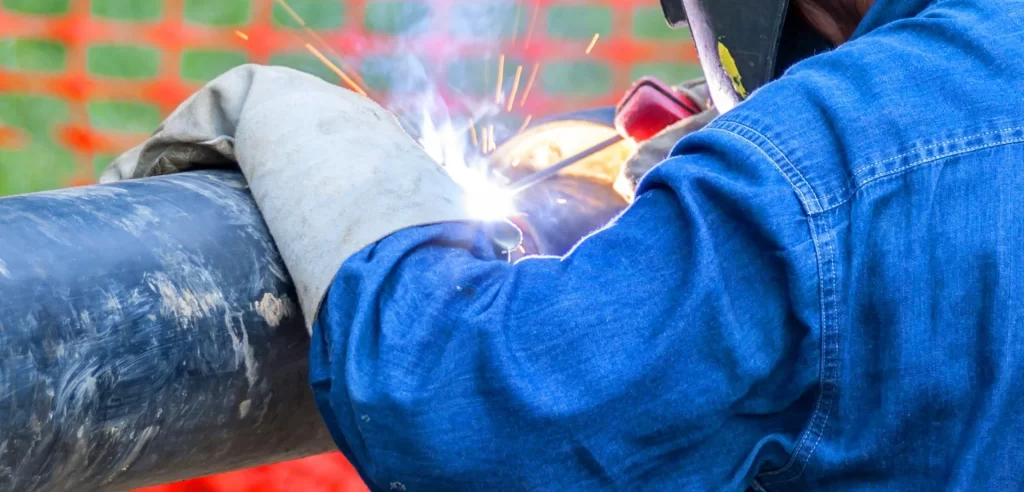The Essential Kinds Of Welding Services Every Market Should Learn About
From the traditional yet reliable arc welding to the precision of laser beam of light welding, each approach supplies distinctive advantages and applications that drive the efficiency and high quality of production. As markets evolve and require for cutting-edge services expands, being well-versed in these welding strategies is not just helpful however vital for remaining affordable and meeting sector standards.
Arc Welding
Arc welding is an extensively utilized welding process that uses an electrical arc to sign up with metal parts together. This technique is prevalent in different markets because of its flexibility and efficiency in developing long lasting and solid welds. The procedure involves creating an electrical arc in between the base metal and a palatable electrode, usually made from a comparable material. As the arc heats up the work surfaces, they melt and fuse with each other, forming a solid joint upon cooling.
Among the essential advantages of arc welding is its capability to weld a vast array of metals and alloys, making it suitable for varied applications. Furthermore, arc welding can be executed using various variations, such as shielded metal arc welding (SMAW), gas metal arc welding (GMAW), and flux-cored arc welding (FCAW), each offering certain advantages relying on the job demands.
Moreover, arc welding is known for its simplicity and cost-effectiveness, making it a favored option for numerous producers and makers. By mastering the numerous methods and devices related to arc welding, experts can generate premium welds efficiently and accurately.
Gas Metal Arc Welding (GMAW)

Among the crucial benefits of GMAW is its ability to develop tidy welds with very little splatter, making it ideal for applications that call for a high level of accuracy. In addition, GMAW is relatively very easy to find out and can be automated for increased performance in commercial settings. With appropriate strategy and equipment arrangement, GMAW can create solid, high-grade welds that fulfill industry standards. In general, GMAW is a versatile welding process that provides performance, adaptability, and reliability for a range of welding applications throughout various industries.
Gas Tungsten Arc Welding (GTAW)
Gas Steel Arc Welding (GMAW) supplies remarkable welding effectiveness, and in a similar way, Gas Tungsten Arc Welding (GTAW) brings a various set of advantages to the table in the realm of welding solutions (Welding Inspection Service). GTAW, additionally referred to as Tungsten Inert Gas (TIG) welding, is a top quality and flexible welding procedure typically made use of in markets such as aerospace, vehicle, and manufacturing

One of the essential benefits of GTAW is its capability to generate high-quality, accurate welds on a selection of steels, consisting of light weight aluminum, stainless-steel, and copper alloys. This process permits greater control over the welding arc, leading to tidy, spatter-free welds with marginal post-weld clean-up required.
GTAW is likewise favored for its capacity to bond slim materials without creating warping or distortion, making it optimal for applications where looks and accuracy are essential. Additionally, the TIG welding process can be made use of with or without filler metal, providing flexibility in welding different joint types and thicknesses.

Resistance Welding
A widely utilized welding method in numerous industries due to its performance and performance is Resistance Welding. This method involves signing up with 2 steel items by using stress and passing a current through them. The warm generated by the electrical resistance at the joint causes the products to fuse with each other. There are numerous sorts of resistance welding, consisting of area welding, seam welding, and estimate welding, each suited for details important site applications.
Place welding is frequently used in the auto industry for joining sheet metal components. Projection welding is appropriate for welding nuts, screws, or various other fasteners onto steel components.

Laser Light Beam Welding
Using a very concentrated laser beam to thaw and join steel components, laser beam welding is a efficient and exact welding strategy typically employed in various markets. This advanced approach uses numerous benefits, including minimal distortion, high welding rates, and the capacity to weld materials with high accuracy.
Laser light beam welding functions by guiding a laser beam at the work surface, which creates a liquified pool that merges the products together upon solidification. The process is non-contact, implying there is no demand for the welding device to touch the workpiece, reducing the threat of contamination or damage. Furthermore, the concentrated beam of light enables for deep weld infiltration and narrow weld joints, making it ideal for applications needing high accuracy and toughness.
Industries such as automotive, aerospace, electronic devices, and medical device production commonly depend on laser beam welding for its capacity to create top quality welds with very little heat-affected zones. As innovation remains to development, laser welding is expected to play a significantly significant role in the construction of intricate parts throughout numerous industries.
Verdict
To conclude, recognizing the crucial kinds of welding solutions such as Arc Welding, Gas Metal Arc Welding (GMAW), Gas Tungsten Arc Welding (GTAW), Resistance Welding, and Laser Beam Welding is crucial for every market. Each of these methods plays a distinct duty in the production and construction processes, guaranteeing strong and long lasting connections for various products. By knowing these welding services, sectors can make enlightened choices about which approach ideal fits their specific demands.
From the typical yet reputable arc welding to the accuracy of laser beam welding, each technique provides unique advantages and applications that drive the performance and quality of manufacturing.Arc welding is a commonly made use of welding process that uses an electrical arc to sign up with metal parts together.Gas Metal Arc Welding (GMAW) is an extremely efficient and frequently used welding procedure in various industries for signing up with metal look at these guys elements together making use of a protecting gas and a consumable electrode. There are a number of types of resistance welding, including spot welding, seam welding, and projection welding, each fit for specific applications.
In conclusion, recognizing the important types of welding services such as Arc Welding, Gas Metal Arc Welding (GMAW), Gas Tungsten Arc Welding (GTAW), Resistance Welding, and Laser my explanation Beam Welding is crucial for every sector. - Welding Inspection Service